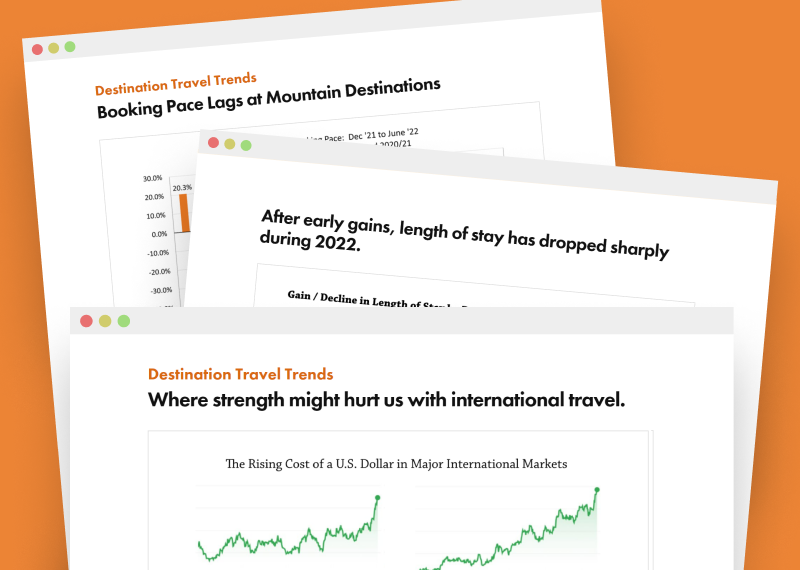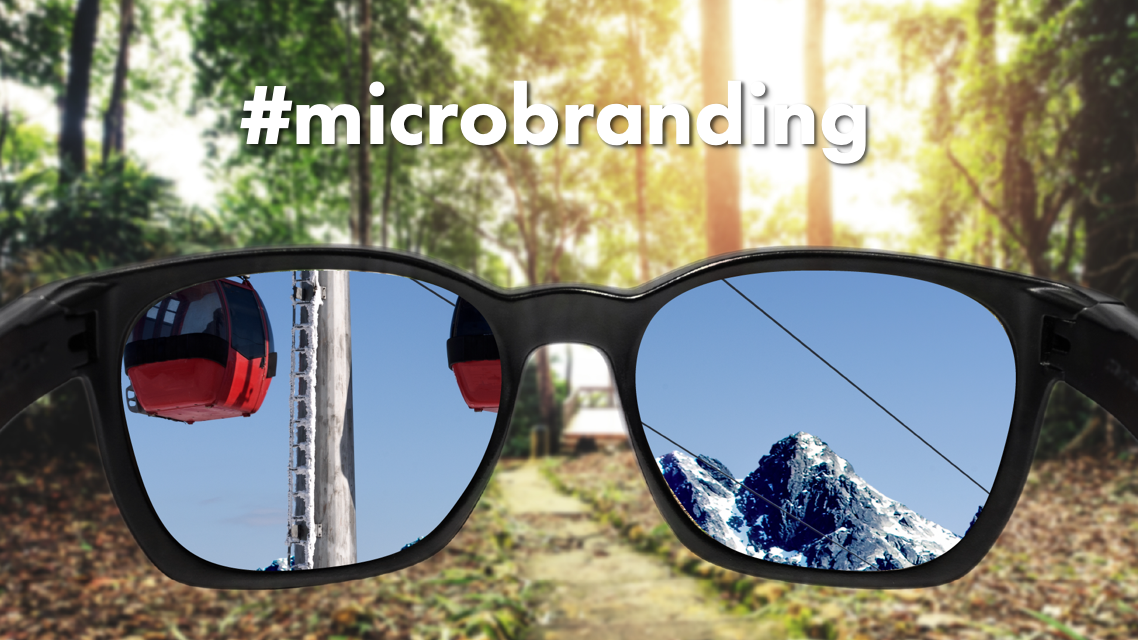

 Donnie Clapp
Donnie Clapp
There are two things you hear a lot in the world of marketing:
- Right message, right person, right time.
- Consistency is key.
The first is often used to push the idea of dynamic content and personalization. The second is the first rule of branding. Both sound great, but if you think about it for a minute, the two ideas don’t really work together.
How can you be consistent if you’re changing your message all the time for different people and times?
Traditionally, you really couldn’t. But we’ve entered a new era. Modern marketing technology – CRM, CDP, and automated marketing platforms – makes it possible to be consistent in your messaging and give the right message, to the right person, at the right time.
And that means that you can do something previous generations of marketers couldn’t: You can carve your brand into subtly different sub-brands without having to worry about muddying the waters or diluting your core message.
We call this #microbranding.
What is a brand?
To understand why this is a big deal, we need to first examine what the terms brand and branding actually mean.
A brand – your brand – is not something you create. It’s something you discover. And that’s because only half of it is the story you tell about yourself. The other half is much more interesting – it’s the story about you that your audience already has in its head.
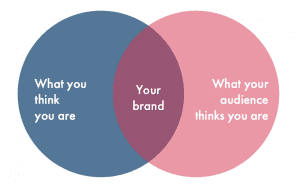
Your brand is the intersection of what you think you are, and what your audience thinks you are.
Identifying and codifying your brand in a useful way is much larger discussion we’ll leave for another day, but let’s set that aside and move on to branding.
Your brand is a thing – a collection of context, stories, feelings, images, design elements, and ideas.
Branding is an action – what you do with that thing. It’s advertising, emails, the way your front desk staff is dressed and how they talk to your guests, your social posts, your YouTube videos, and so on.
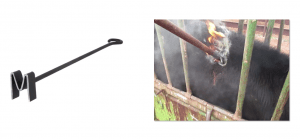
A brand vs. branding.
The last thing to understand is that a brand isn’t static. Unlike that branding iron above, it changes over time. You change the stories and images and words you use, and your guests’ and prospects’ experiences and opinions change. And all along the way, your brand continues to re-settle in that shared space where the two halves meet.
So although you can’t 100% control your brand, you can absolutely steer it (no pun intended). The more consistent you are in your branding, the more you can influence the story your audience has in their head about you.
Which is why for as long as professional brand marketers have been around, we’ve been preaching consistency. Over hundreds of touchpoints, you have the chance to really cement ideas in your customers’ heads.
But what about different audiences?
Under this brand/branding model, there is a big problem with telling different things to different people: You give up consistency, and so can’t be sure the story your audience has in its head is the one you want. And more importantly, it’s pretty tough to deliver an experience that matches all the different stories you’re telling.
To use an example from the ski industry, think back to when terrain parks first started picking up steam. Many resorts created entirely different brands for their terrain parks because in order to attract that audience, they needed to be fairly gnar-gnar and totally sick. They would run an ad in Snowboarder with that tone, while running their primary brand in SKI.
This is not great in terms of brand building, because eventually those kids that read Snowboarder showed up and realized that most of the resort felt a lot more like that stodgy ad in SKI. Their experience was inconsistent with the story they’d told themselves based on the ads they saw, and that led to negative feelings and bad word of mouth.
This is not to say it’s impossible to create a successful separate terrain park experience and a brand to go along with it, but you can see how just changing the branding part without changing the experience part could lead to problems.
To recap brand and branding: You tell your brand story over and over in little chunks, which influences the way your audience sees your brand, and everyone wins if the experience you provide pays that story off in a satisfying way.
On a large scale, this only works if all the little messaging chunks you use match up into one cohesive brand.
#Microbranding to the rescue
So what has changed? What’s so special about centralized data, comprehensive software platforms built specifically for hospitality and ski resorts, and automated marketing?
The difference is that we can now close the circle. If we know enough about an individual or audience segment, we can use only the chunks of messaging that are most likely to resonate with them, and we can follow those people through the funnel and provide an experience that matches the story we’ve been telling.
The other big breakthrough is that by making only very subtle changes to our brand, it is much less difficult to provide the matching, subtly-different experiences.
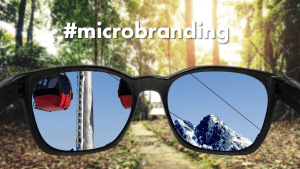
Your guests see the version of your resort that matches the story they’re telling themselves about you.
It’s not hard, for example, to imagine a group of guests that think of your destination as primarily a summer place, and another for whom you are primarily a winter resort. You deliver different experiences in each season, and for each of those groups, that experience matches their version of your brand.
Microbranding is about purposefully taking this to a more subtle and powerful level.
Putting microbranding to work
You might know some useful things about the people staying with you or purchasing from you: their age, living locations, members in their household, past purchases, current bookings, and other things like social media info and aggregated customer traits.
You have the opportunity to serve your guests the right message for their individual needs based on the information you know about them. It’s an opportunity to re-enforce the story you want to tell to a specific guest segment. It’s also an opportunity to upsell them with products they are most likely to buy.
Here’s an example of using dynamic content in a pre-arrival email to give a different message to customers based on whether they have children attached to their reservation.
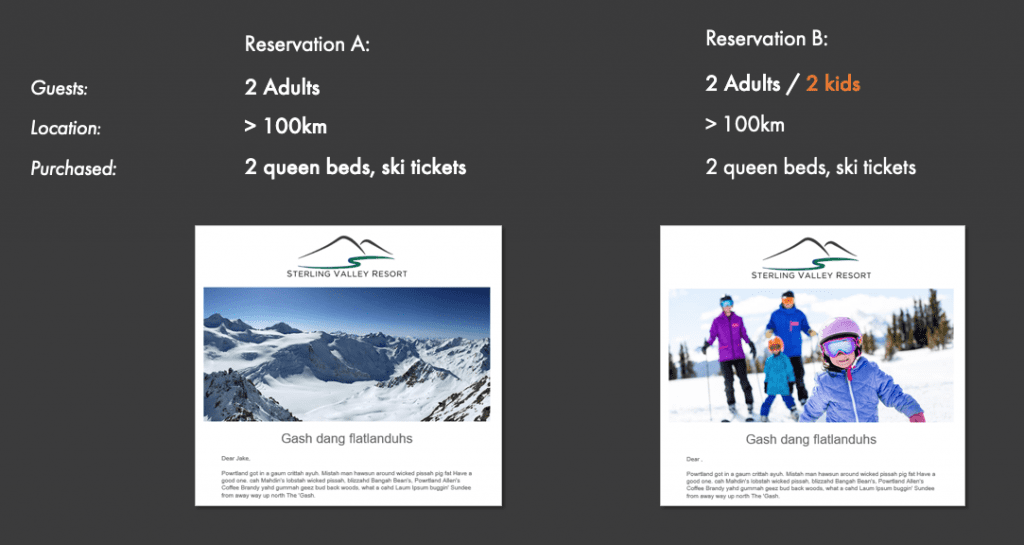
Or older guests vs. younger guests:
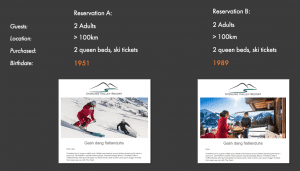
Or separate beds vs. a king bed for a reservation with two guests:
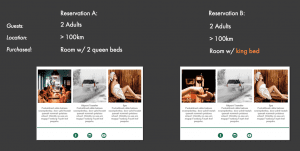
Or taking into account multiple things, like whether someone might be interested in spa services or not, and whether they’ve already booked any.
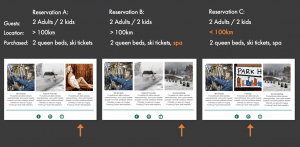
Putting it all together
The lesson for today is that every time your guests or prospects see anything from or about your destination they’re refining your brand in their heads, and that has a huge impact on how happy they are with the experience.
The people getting the personalized emails above are not just getting pitched different services. They’re learning over time and hundreds of touch points that your resort is very focused on serving couples (if they’re a couple), or very focused on family-friendly activities (if they have kids).
If you can be very, very consistent – combine targeted ads, personalized web content, personalized pre-arrival email and other messaging, and actual personalized service into well orchestrated sub-brands – well then you have opened up a huge opportunity for yourself.
It is possible, today, to have one group of people who knows you as “the perfect place for couples” and another who knows you as “the perfect place to bring kids”, and for them to both be right!
Of course like anything worth doing, it’s not easy. But (shameless plug time) a professional grade marketing platform like Inntopia Marketing Cloud can make it a lot more manageable (and having access to a Strategic Account Manager who lives and breathes this stuff doesn’t hurt, either).
So if you’re curious about any of this or looking for some hands-on advice, don’t hesitate to reach out.
Have a question? Just ask.

Tyler Maynard
SVP of Business Development
Ski / Golf / Destination Research
Schedule a Call with Tyler→

Doug Kellogg
Director of Business Development
Hospitality / Attractions
Schedule a Call with Doug→
If you're a current Inntopia customer, contact support directly for the quickest response →
Request Demo
A member of our team will get back to you ASAP to schedule a convenient time.



